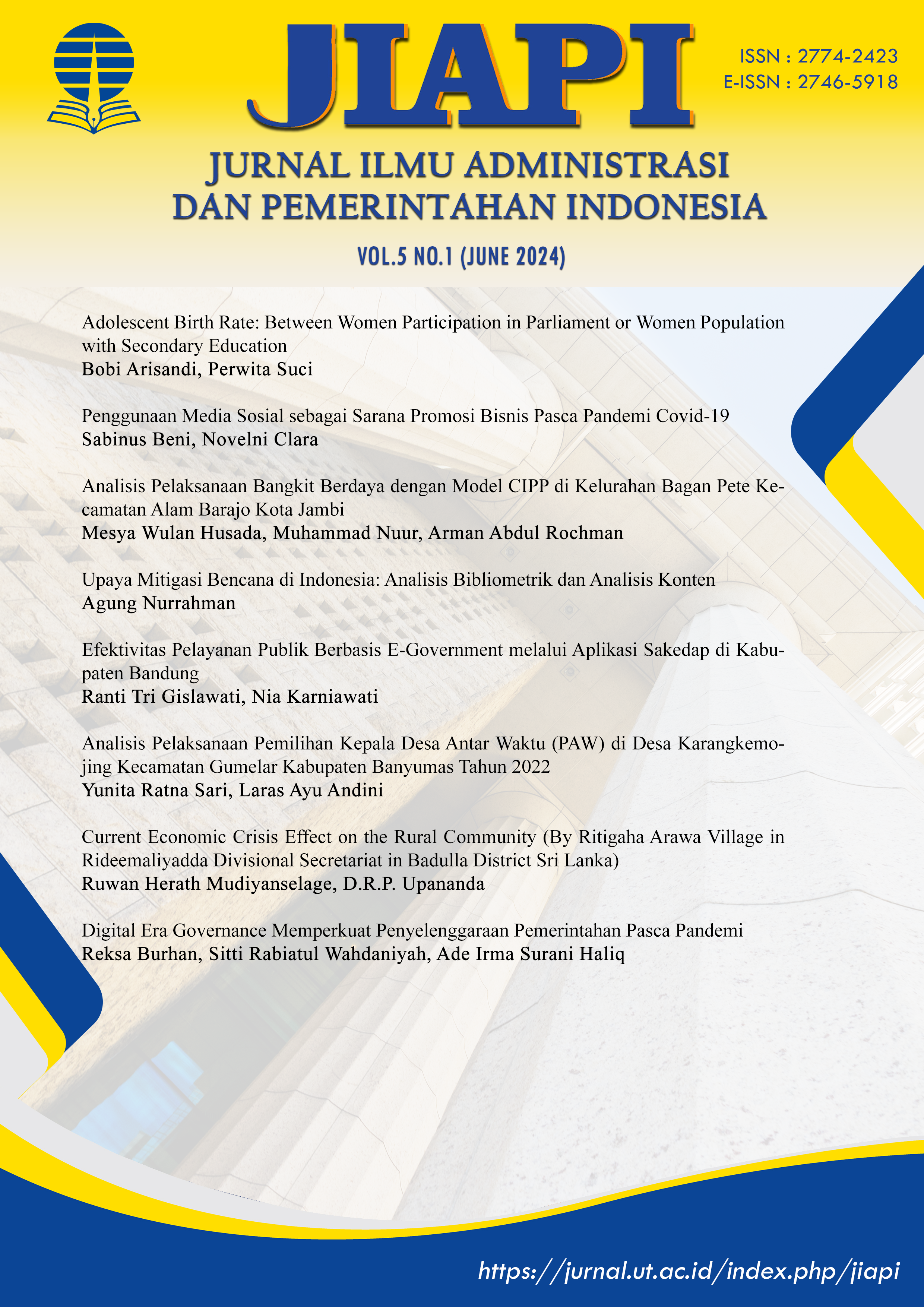Adolescent Birth Rate: Between Women Participation in Parliament or Women Population with Secondary Education
DOI:
https://doi.org/10.33830/jiapi.v5i1.7719Keywords:
adolescent birth rate, education, multiple linear regression, parliament, womenAbstract
This study investigates the causal relationship between women’s participation in parliament and the proportion of women with secondary education on the global adolescent birth rate. Utilizing data from the United Nations Development Programme’s Gender Inequality Index, the research adopts a quantitative, explanatory design to examine how these independent variables influence adolescent birth rates across countries. Multiple linear regression analysis was employed to test the proposed hypotheses. The results reveal a divergent pattern: Women’s participation in parliament (X1) shows a positive causal relationship with the adolescent birth rate (coefficient = 0.009547). In contrast, the proportion of women with secondary education (X2) demonstrates a statistically significant negative relationship (coefficient = -0.730165). These findings indicate that contrary to expectations, increased parliamentary representation alone does not significantly contribute to reducing adolescent birth rates. In contrast, a higher percentage of women receiving secondary education is significantly associated with lower adolescent birth rates. These results underscore the urgent need to prioritize female education as a more effective strategy for addressing adolescent fertility globally. While political representation remains important for broader gender equality goals, this study contributes to the existing literature by highlighting that educational attainment among women has a more direct and measurable impact on adolescent reproductive outcomes. The findings provide valuable insights for policymakers, international development agencies, and gender equity advocates seeking data-driven approaches to reduce adolescent births and improve gender-sensitive health and education policies.
Downloads
Published
Issue
Section
License
Copyright (c) 2024 Bobi Arisandi, Perwita Suci

This work is licensed under a Creative Commons Attribution-ShareAlike 4.0 International License.
An author who publishes in JIAPI: Jurnal Ilmu Administrasi dan Pemerintahan Indonesia agrees to the following terms:
- The author retains the copyright and grants the journal the right of first publication of the work simultaneously licensed under the Creative Commons Attribution-ShareAlike 4.0 License that allows others to share the work with an acknowledgment of the work's authorship and initial publication in this journal
- The author is able to enter into separate, additional contractual arrangements for the non-exclusive distribution of the journal's published version of the work (e.g., post it to an institutional repository or publish it in a book) with the acknowledgment of its initial publication in this journal.
- The author is permitted and encouraged to post his/her work online (e.g., in institutional repositories or on their website) prior to and during the submission process, as it can lead to productive exchanges, as well as earlier and greater citation of the published work (See The Effect of Open Access).
Read more about the Creative Commons Attribution-ShareAlike 4.0 Licence here: https://creativecommons.org/licenses/by-sa/4.0/.














